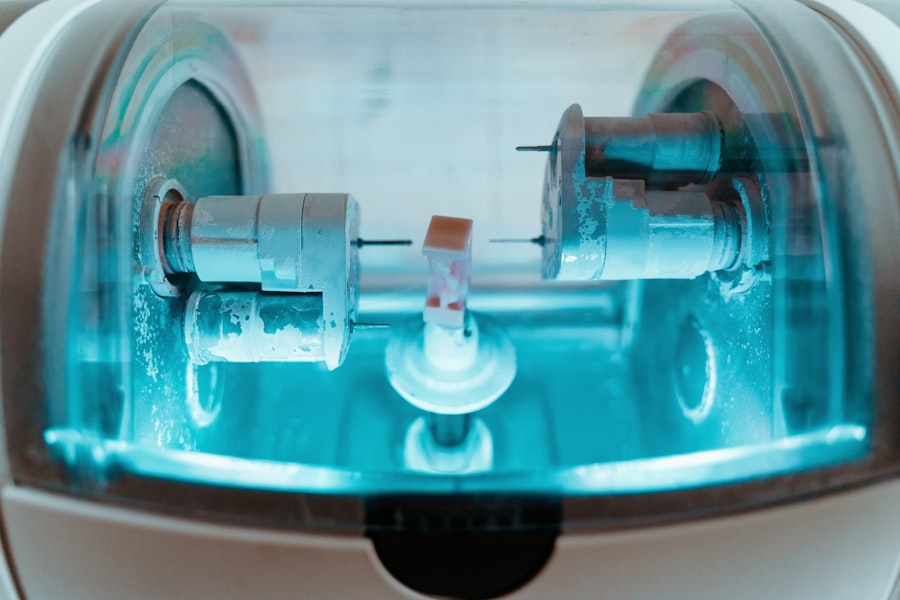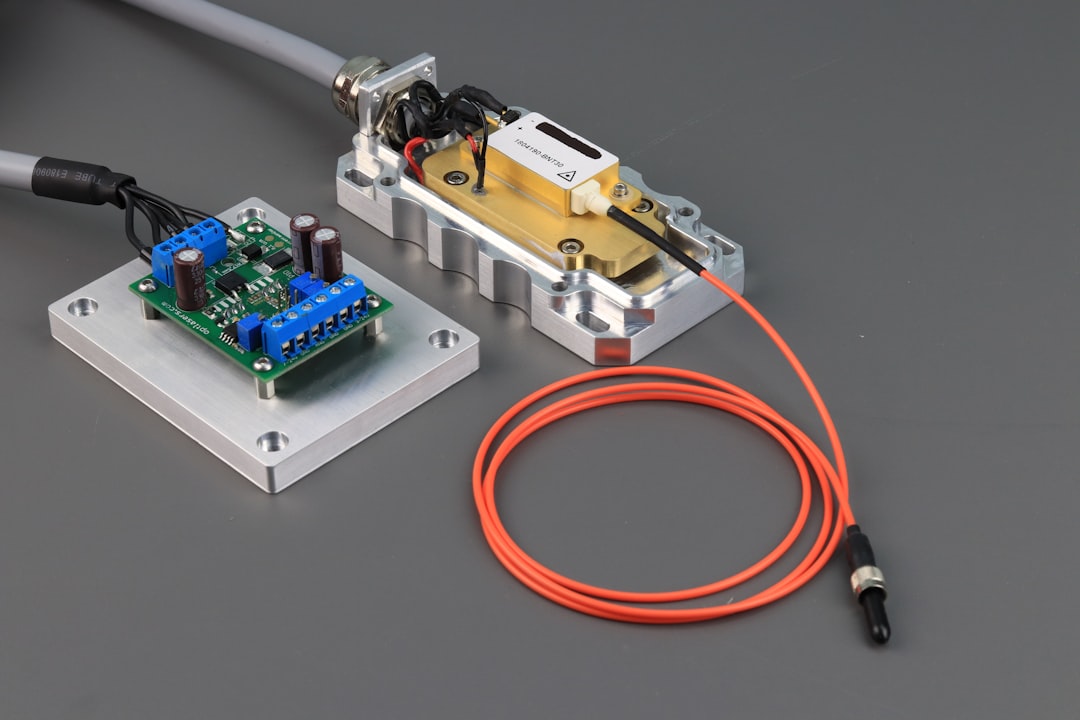Laser hair removal is a popular cosmetic procedure that utilizes concentrated beams of light to target and eliminate unwanted hair. The process works by emitting a specific wavelength of light that is absorbed by the pigment in the hair follicles. This absorption generates heat, which damages the follicle and inhibits future hair growth.
As you consider this treatment, it’s essential to understand how it works and what to expect during your sessions. The procedure is typically performed in a clinical setting by trained professionals, ensuring safety and efficacy. During your initial consultation, the provider will assess your skin type, hair color, and overall health to determine if you are a suitable candidate for laser hair removal.
The effectiveness of the treatment can vary based on these factors, as the laser is most effective on individuals with light skin and dark hair. However, advancements in technology have made it possible for people with various skin tones and hair colors to benefit from this procedure. Understanding the science behind laser hair removal can help you feel more confident as you embark on this journey toward smoother skin.
Key Takeaways
- Laser hair removal targets hair follicles with concentrated light energy to inhibit future hair growth
- Shave the treatment area before the appointment and avoid sun exposure to prepare for laser hair removal
- Research and choose a reputable and experienced laser hair removal provider for safe and effective treatment
- Proper aftercare, including avoiding sun exposure and moisturizing the skin, can maximize results and minimize side effects
- Different skin and hair types require customized treatment plans for optimal results and safety
Preparing for Laser Hair Removal Treatment
Protect Your Skin from the Sun
Before your first appointment, you should avoid sun exposure for at least two weeks. Tanning can increase the risk of complications and may affect the laser’s ability to target hair follicles effectively.
Avoid Hair Removal Methods
Additionally, it’s advisable to refrain from waxing, plucking, or using depilatory creams for several weeks prior to your treatment. These methods can disturb the hair follicles, making them less responsive to the laser.
Prepare Your Skin for the Procedure
On the day of your appointment, arrive with clean skin free of lotions, creams, or makeup. Your provider may also recommend shaving the treatment area a day or two before your session to ensure that the laser can focus on the hair follicles without interference from longer hair above the skin’s surface. This preparation helps maximize the effectiveness of the treatment while minimizing discomfort during the procedure. By taking these steps, you set yourself up for a smoother experience and better results.
Choosing the Right Laser Hair Removal Provider

Selecting a qualified provider for your laser hair removal is crucial for achieving optimal results and ensuring your safety throughout the process. Start by researching clinics in your area and looking for licensed professionals with extensive experience in laser treatments. Reading reviews and testimonials from previous clients can provide valuable insights into their experiences and satisfaction levels.
You want to choose someone who not only has the technical skills but also prioritizes patient care. During your consultation, don’t hesitate to ask questions about the technology they use, their training, and their approach to treatment. A reputable provider will be transparent about their methods and will take the time to address any concerns you may have.
Additionally, ensure that they conduct a thorough assessment of your skin and hair type before recommending a treatment plan. This personalized approach is essential for achieving the best possible outcomes.
Maximizing Results with Proper Aftercare
| Aftercare Method | Effectiveness | Recommended Frequency |
|---|---|---|
| Rest and Recovery | High | After each intense workout |
| Proper Nutrition | High | Every day |
| Hydration | High | Throughout the day |
| Stretching and Flexibility | Medium | Before and after exercise |
Aftercare plays a significant role in maximizing the results of your laser hair removal treatment. Immediately following your session, you may experience some redness or swelling in the treated area, which is entirely normal. To soothe any discomfort, applying a cool compress can be beneficial.
Your provider may also recommend specific topical treatments or soothing gels to help alleviate any irritation. In the days following your treatment, it’s essential to avoid sun exposure and tanning beds, as your skin will be more sensitive.
Additionally, refrain from engaging in activities that may cause excessive sweating or irritation, such as intense workouts or hot baths, for at least 24 hours post-treatment. By adhering to these aftercare guidelines, you can enhance your results and promote healing.
Customizing Treatment Plans for Different Skin and Hair Types
One of the most significant advantages of laser hair removal is its ability to be tailored to individual needs based on skin and hair types.
For instance, individuals with darker skin may benefit from lasers that use longer wavelengths to minimize the risk of skin damage while effectively targeting hair follicles.
Your provider will assess your unique characteristics during the consultation phase to create a customized treatment plan that aligns with your goals. This personalized approach ensures that you receive the most effective treatment possible while minimizing potential side effects. Understanding that each person’s skin and hair type is different allows for a more targeted approach, ultimately leading to better results.
Managing Expectations and Setting Realistic Goals

Factors Affecting Outcomes
Various factors, such as hormonal changes, genetics, and individual response to treatment, can influence the outcomes of laser hair removal. It’s essential to consider these factors when setting your expectations.
Setting Realistic Goals
Having an open dialogue with your provider about what you can realistically expect based on your unique situation is vital. Setting realistic goals, such as significant reduction in hair density or improved smoothness in treated areas, will help you stay motivated throughout the process.
Achieving Optimal Outcomes
By understanding that results may vary and that multiple sessions are often necessary for optimal outcomes, you can approach your treatment with a more balanced perspective. This will help you stay focused on your goals and appreciate the progress you make along the way.
Incorporating Other Hair Removal Methods for Optimal Results
While laser hair removal can significantly reduce unwanted hair growth, some individuals may find it beneficial to incorporate other hair removal methods into their routine for optimal results. For instance, using shaving or trimming between sessions can help maintain smoothness while waiting for the next laser treatment. This approach allows you to manage any regrowth without interfering with the effectiveness of the laser.
Additionally, some people may choose to combine laser treatments with other methods like electrolysis for areas where finer or lighter hairs persist after several sessions. This multi-faceted approach can enhance overall results and provide a more comprehensive solution to unwanted hair growth. Discussing these options with your provider can help you develop a well-rounded plan tailored to your needs.
Maintaining Long-Term Results through Follow-Up Treatments
To achieve long-lasting results from laser hair removal, follow-up treatments are essential. Most individuals require multiple sessions spaced several weeks apart to target hairs during their growth cycle effectively. After completing an initial series of treatments, many find that maintenance sessions every six months or annually help keep regrowth at bay.
Your provider will guide you on how often you should return for follow-up treatments based on your individual response to the initial sessions. Staying committed to this maintenance schedule is crucial for preserving the results you’ve achieved and ensuring that any new hair growth is addressed promptly. By prioritizing these follow-up appointments, you can enjoy smooth skin for years to come.
In conclusion, understanding the intricacies of laser hair removal—from preparation and provider selection to aftercare and maintenance—can significantly enhance your experience and results. By taking an informed approach and setting realistic expectations, you position yourself for success in achieving smoother skin through this innovative treatment method.
If you are looking to speed up your laser hair removal process, you may want to check out this article on how to maximize the effectiveness of your laser hair removal treatments. This article provides tips and tricks on how to prepare for your sessions, as well as what to do post-treatment to ensure the best results. By following these guidelines, you can help speed up the process and achieve smoother, hair-free skin in less time.
FAQs
What is laser hair removal?
Laser hair removal is a cosmetic procedure that uses a concentrated beam of light (laser) to remove unwanted hair. The laser targets the pigment in the hair follicles, damaging them and inhibiting future hair growth.
How can I speed up the process of laser hair removal?
To speed up the process of laser hair removal, you can ensure that you are a good candidate for the procedure, follow the recommended treatment schedule, avoid sun exposure, and maintain a healthy lifestyle.
Am I a good candidate for laser hair removal?
Good candidates for laser hair removal are individuals with light skin and dark hair, as the contrast makes it easier for the laser to target the hair follicles. However, advancements in technology have made laser hair removal effective for a wider range of skin and hair types.
How many sessions of laser hair removal are typically needed?
The number of sessions needed for laser hair removal varies depending on the individual’s hair type, skin color, and the area being treated. On average, most people require 6-8 sessions for optimal results.
What should I avoid before and after laser hair removal sessions?
Before laser hair removal, it is recommended to avoid sun exposure and tanning beds, as well as plucking, waxing, or electrolysis. After the treatment, it is important to protect the treated area from sun exposure and follow any post-care instructions provided by the practitioner.
Are there any lifestyle changes that can help speed up the results of laser hair removal?
Maintaining a healthy lifestyle, including a balanced diet and regular exercise, can help support the effectiveness of laser hair removal. Additionally, avoiding smoking and excessive alcohol consumption can contribute to better results.






